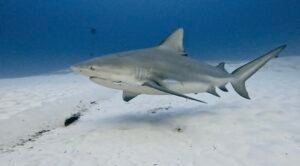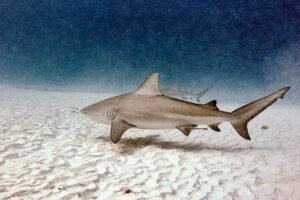Welcome, fellow diving enthusiasts! Whether you’re an experienced diver or just dipping your toes into the underwater world, understanding the language of scuba diving is essential for a safe and enjoyable experience. Welcome to the ABCs of Diving, where we will explore different scuba diving terms as we go through the alphabet. To read previous posts from this column check out our other blogs. Today we continue with the letter T:

Task Loading: Task loading refers to the cognitive and physical demands placed on a diver during a dive. The more tasks a diver has to manage—such as navigation, gas switching, operating equipment, and communicating—the higher the risk of becoming overwhelmed or making mistakes. Minimizing task loading by practicing skills and planning dives carefully is crucial for diver safety, especially in technical diving environments.
Technical Diving: Technical diving involves going beyond the limits of recreational diving, including diving deeper than 40 meters (130 feet), entering overhead environments (such as caves or wrecks), and using specialized gas mixtures like trimix or nitrox. Technical diving requires advanced training, equipment, and planning to handle the increased risks, such as decompression sickness and equipment failure in extreme conditions.
Toynbee Maneuver. The Toynbee maneuver is a technique used to equalize pressure in the middle ear, similar to the Valsalva maneuver. To perform it, the diver pinches their nose and swallows. This method opens the Eustachian tubes and equalizes pressure, which helps avoid ear pain or injury during descent. It’s an important skill for divers to practice, especially when descending quickly or diving in colder waters.
Travel Gas: Travel gas is a breathing gas mixture used by technical divers during the descent and ascent phases of a dive. It’s different from the primary gas used at depth (often trimix or another special gas blend) and is optimized for shallower depths to reduce decompression obligations or prevent oxygen toxicity. Switching between different gas mixes requires careful planning and is a critical part of technical dive planning.
Trimix: Trimix is a breathing gas blend of oxygen, nitrogen, and helium used in technical diving. This gas mixture allows divers to reach greater depths safely by reducing the narcotic effect of nitrogen (nitrogen narcosis) and the risk of oxygen toxicity. By adjusting the percentages of each gas, divers can extend their bottom time and make deep dives more manageable.
Trim Weight: Trim weight refers to additional weights placed strategically on a diver’s gear to adjust their body position and achieve optimal buoyancy control. Proper trim allows the diver to maintain a horizontal position in the water, reducing drag and conserving energy. Fine-tuning trim weight placement can enhance comfort, minimize effort, and improve overall dive performance, especially in technical or long-duration dives.
Turn the Dive: Turn the dive is a phrase used to indicate when it’s time to begin the return portion of a dive, whether due to reaching half of the available gas supply, reaching a planned depth/time limit, or encountering an environmental condition that requires turning back. This ensures that divers have enough gas and time to return safely to the surface, especially in overhead environments or deeper dives where a direct ascent isn’t possible.
Scuba diving is a blend of technical skill, environmental awareness, and appreciation for marine life. By familiarizing yourself with these diving terms, you’ll enhance your diving knowledge and safety practices, ensuring each underwater adventure is a memorable and enjoyable experience. Whether you’re exploring reefs, wrecks, or underwater caves, the underwater world awaits with its mysteries and beauty. Happy diving!


